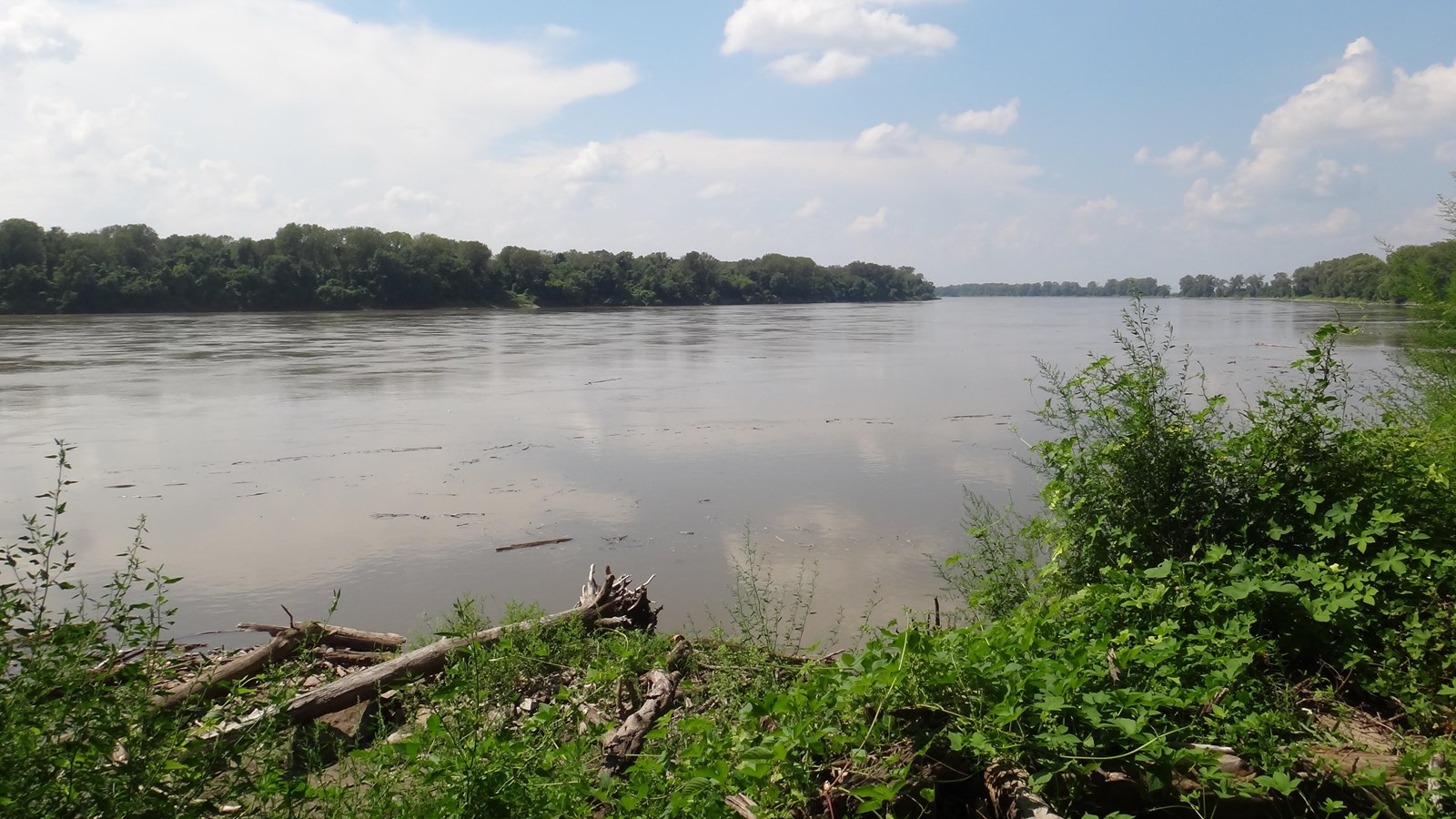Last updated: November 25, 2020
Place
Winter Camp at Wood River (Camp Dubois)

Lewis and Clark NHT Visitor Centers and Museums
This map shows a range of features associated with the Lewis and Clark National Historic Trail, which commemorates the 1803-1806 Lewis and Clark Expedition. The trail spans a large portion of the North American continent, from the Ohio River in Pittsburgh, Pennsylvania, to the mouth of the Columbia River in Oregon and Washington. The trail is comprised of the historic route of the Lewis and Clark Expedition, an auto tour route, high potential historic sites (shown in black), visitor centers (shown in orange), and pivotal places (shown in green). These features can be selected on the map to reveal additional information. Also shown is a base map displaying state boundaries, cities, rivers, and highways. The map conveys how a significant area of the North American continent was traversed by the Lewis and Clark Expedition and indicates the many places where visitors can learn about their journey and experience the landscape through which they traveled.
The Winter Camp at Wood River is a High Potential Historic Site on the Lewis and Clark National Historic Trail.
Clark established the winter quarters for the expedition on the south side of the Wood River on a site previously identified by Lewis. On December 12, 1803, Clark wrote, “I came to in the mouth of a little River called Wood River” and the following day he “fixed on a place to build huts Set the men to Clearing land & Cutting Logs.” While there it was Clark’s responsibility to train the men of the newly-formed Corps of Discovery. Meanwhile, Lewis spent the winter in St. Louis gathering supplies and equipment. On March 9, 1804, Lewis attended a ceremony in St. Louis for the transfer of the Upper Louisiana Territory to the United States. After two months, the expedition left for St. Charles, Missouri, where Lewis joined them a week later. During the return trip, the expedition revisited the camp site on September 23, 1806. Clark noted that “here we found a widdow woman who we left here & has a plantation under tollarable good way Since we have been on the Expedition.”
The winter camp was originally sited on the Illinois side of the Mississippi River. Since that time, the Mississippi’s channel has shifted eastward, the mouth of the Missouri River has shifted southward, and a new channel for the Wood River was dredged. Consequently, the historic site of the Winter Camp at Wood River is now located on the west side of the Mississippi River, in Missouri. Nearby interpretation of the camp is found at the Lewis and Clark State Historic Site reconstruction in Hartford, Illinois.
After the Corps of Discovery departed Camp Dubois on May 14, 1804, Sergeant Patrick Gass recorded his thoughts: “..in the evening we encamped on the north bank six miles up the river. Here we had leisure to reflect on our situation, and the nature of our engagements: and, as we had all entered this service as volunteers, to consider how far we stood pledged for the success of an expedition…”
Camp Dubois sat at the confluence of the Missouri and Mississippi rivers, near present day Hartford, Illinois. Between December 1804 and May 1805, Camp Dubois housed the men of the newly formed Corps of Discovery. During those months dedicated to final preparations for the long journey, these men brawled and drank and disobeyed. And yet as they prepared, the men began the slow process of becoming a corps, a unit.
William Clark guided this transformation. While Meriwether Lewis wintered in St. Louis, securing provisions and consulting fur traders’ journals, Clark delegated and disciplined. Courts-martial and confinement were standards of military discipline. Hard work taught the men to rely on one another and prepared them for the long voyage. Turning mischief to skill, the men held shooting matches with local farmers and honed their marksmanship.
Camp Dubois proved to be the expedition’s first test of cohesiveness. Living and working together prepared Corps members like Gass to face the trials the journey would bring. Still, on that spring morning in 1804, it was not without anticipation and trepidation that they “proceeded on under a jentle brease up the Missouri.”
More information about Camp Dubois is available in the following books and web sites.
Books
The Journals of the Lewis and Clark Expedition, vol. 2.
Edited by Gary E. Moulton and published by the University of Nebraska Press.
Web sites
Lewis and Clark State Historic Site
